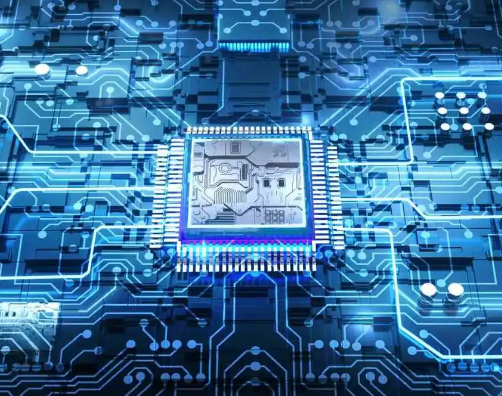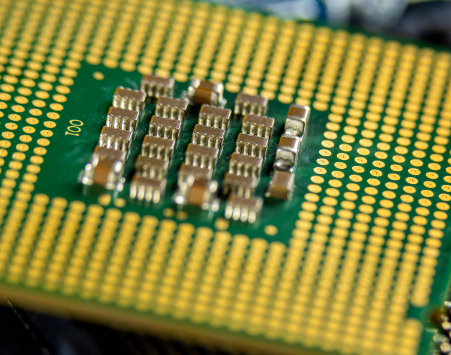- Ameya360 Component Supply Platform >
- Trade news >
- The rebirth of the semiconductor industry
The rebirth of the semiconductor industry
“Software is eating the world … and AI is eating software.” Amir Husain, author of The Sentient Machine, at SEMICON West 2018
We’re living in a digital world where semiconductors have been taken for granted. But, Artificial Intelligence (AI) is changing everything – and bringing semiconductors back into the deserved spotlight. AI’s potential market of hundreds of zettabytes and trillions of dollars relies on new semiconductor architectures and compute platforms. Making these AI semiconductor engines will require a wildly innovative range of new materials, equipment, and design methodologies.
Moore’s Law carried us the past 50-plus years and as we’re now stepping into the dawn of AI’s potential, we can see that the coming Cognitive Era will drive its own exponential growth curve. This is great for the world – virtually every industry will be transformed, and people’s lives will get better – and it’s fantastic for our industry. This truly is the very best time to be working in our industry. I’m excited to be at SEMI in this inflection period and at the center of the collaborative platforms that bring the electronics manufacturing supply chain together to Connect, Collaborate, and Innovate to realize the new Cognitive Era. I invite you to partner with SEMI in building the foundation for the Cognitive Era to increase the growth and prosperity of our industry.
The World Wakes Up
Our lives have become digital. An Amazon Echo wakes us up and answers questions about the weather and traffic. Google Maps tells us the best way to get to a meeting. Yelp finds the best nearby restaurant. A Tweet now even informs us of the latest change in government policy. It’s a digital world that we live in – and the world already takes it for granted.
We in the industry know that the digital world only works because of the semiconductors we make and because of our integrated electronics manufacturing supply chain. We make the materials and equipment that, in turn, make the chips that become the beating hearts of the digital economy.
But, semiconductors have been largely invisible – hidden away under and inside a smart speaker, locked deep within a phone, buried in data centers and out of view. Meanwhile, the internet companies like Google, Amazon, Alibaba, Tencent, and Facebook stole the meaning of “Tech” and were given most of the credit for our digital world.
But, finally, things are changing – it’s all coming back to semiconductors!
AI Changing Everything
Over $400B in semiconductors were sold in 2017 – those unseen chips like hearts beating away in Apple computers, in mobile phones for online shopping and social media, and in televisions showing Netflix. Now internet companies Alphabet, Alibaba, Amazon, Facebook, Microsoft and others are rushing to develop their own chips. Silicon is back in the Silicon Valley! Hardware is, once again, the place to be. Why? We are now entering the epoch of Artificial Intelligence (AI) – and semiconductors, and new compute architectures, are the key to AI. At this moment, hardware, not software, is the AI enabler to make leaps in performance and to usher in new architectures to become brain-like with neural networks.
Beyond major AI chip investments like Google’s (Alphabet) $300M+ program to develop its Tensor Processing Unit (TPU) chip, there’s been a surge in new chip startups and VC funding. Last year, VCs (with corporate investors) invested more than $1.5B in new AI chip startups – doubling the rate from the prior year.
After years of consolidation, there is, as some have described, a “Cambrian Explosion” of semiconductor startups with names like Cerebras, Graphcore, Wave Computing, Horizon Robotics, Cambricon Technologies, and DeePhi from the US, Europe, and China. Cambricon (China) has already become the first AI chip “Unicorn” (startup valued $1B+) with a valuation of more than $2.5B after their recent Round B financing. It’s a new silicon world and a new race, as Cade Metz (The New York Times, 1/14/2018) said, “… everyone is starting from the same place: the beginning of a new market.”
Winning at AI is very big business. John Kelly, SVP Cognitive Solutions and Research at IBM, in his SEMICON West keynote earlier this month, said, we’re in the era of Artificial Intelligence with more than a $2T opportunity for AI decision making support on top of the $1.5T IT business in 2025. McKinsey estimates deep learning could account for between $3.5T and $5.8T in annual value.
As John Kelly presented, AI will transform entire industries – not just our personal devices and lives. The $2T AI decision making support opportunity in 2025 is projected to transform the major economy industries as follows:
Moore’s Law describes the exponential increase in the number of transistors per area that has driven growth, and has been the engine for digital innovation, through first the computer era and then the mobility era and now into the dawn of the data era. While the Dennard scaling approach to Moore’s Law may be slowing, the data-centric era continues to drive demand and the industry continues to find new ways to pack more transistors into less volume. Chip sales are forecast to pass $0.5T in 2019 and I predict they will surpass $1T before 2030.
It turns out the Smart is not enough – we must reach “Beyond Smart.”
Beyond Smart – The Cognitive Era
As we move further into the data-centric age, we see it is more than Big Data and AI, it is, instead, the dawn of a wholly new cognitive era. SEMICON West’s 2018 theme was “Beyond Smart” because we are standing at the inflection from sensors triggering actions (smart) to systems that learn and make decisions (cognitive). Devices are moving “beyond smart” to being “cognitive or aware.” Gary Dickerson (CEO of Applied Materials) at SEMICON West said, “… we are in the beginning of the first inning of a major inflection.”
Even in the early dawn of the cognitive era, the volume of data is simply astonishing. In the last 24 months, we create more than 90% of all historic digital data. By 2025 we expect AI to generate 160 zettabytes – with 80% of that unstructured data. Moore’s Law is an exponential, but as John Kelly points out, AI’s deep learning is driving its own exponential with performance/watt increasing 2.5X each year.
AI was the focus of SEMICON West’s Day 1 keynotes – and a common theme through much of the events programming. There was a common language in the keynotes by John Kelly, Gary Dickerson, and William Dally (Chief Scientist and SVP of Research NVIDIA), and others. We heard how AI is based on data, algorithms, and compute. I was inspired by these talks and for the potential for AI and the cognitive era.
Looking ahead, I believe data + algorithms + compute + machine learning = knowledge and cognition. My vision is that this AI knowledge and cognition will be the catalyst to create new modes of systems transformations that will usher in the next Industrial Revolution. As the 4th Industrial Revolution becomes a reality, I look forward to working with others in SEMI Think Tanks to imagine the 5th Industrial Revolution – and its opportunities for our industry. I believe that it will make our lives better, healthier, more prosperous, and more fulfilled.
A sentiment shared by many speakers at SEMICON West was – this is the most exciting time to be in the semiconductor manufacturing industry. Many wished they were just now starting in the industry as this is the most interesting inflection and transformation ever. There is a flood of new architectures, new materials, new equipment, new processes – and a new system-based design approach to enable the Cognitive Era. We, in hardware manufacturing, are in the driver’s seat for this incredible ride.
Online messageinquiry
- Week of hot material
- Material in short supply seckilling
| model | brand | Quote |
|---|---|---|
| TL431ACLPR | Texas Instruments | |
| RB751G-40T2R | ROHM Semiconductor | |
| MC33074DR2G | onsemi | |
| CDZVT2R20B | ROHM Semiconductor | |
| BD71847AMWV-E2 | ROHM Semiconductor |
| model | brand | To snap up |
|---|---|---|
| STM32F429IGT6 | STMicroelectronics | |
| IPZ40N04S5L4R8ATMA1 | Infineon Technologies | |
| ESR03EZPJ151 | ROHM Semiconductor | |
| BU33JA2MNVX-CTL | ROHM Semiconductor | |
| BP3621 | ROHM Semiconductor | |
| TPS63050YFFR | Texas Instruments |
- Week of ranking
- Month ranking
Qr code of ameya360 official account
Identify TWO-DIMENSIONAL code, you can pay attention to


Please enter the verification code in the image below:


























